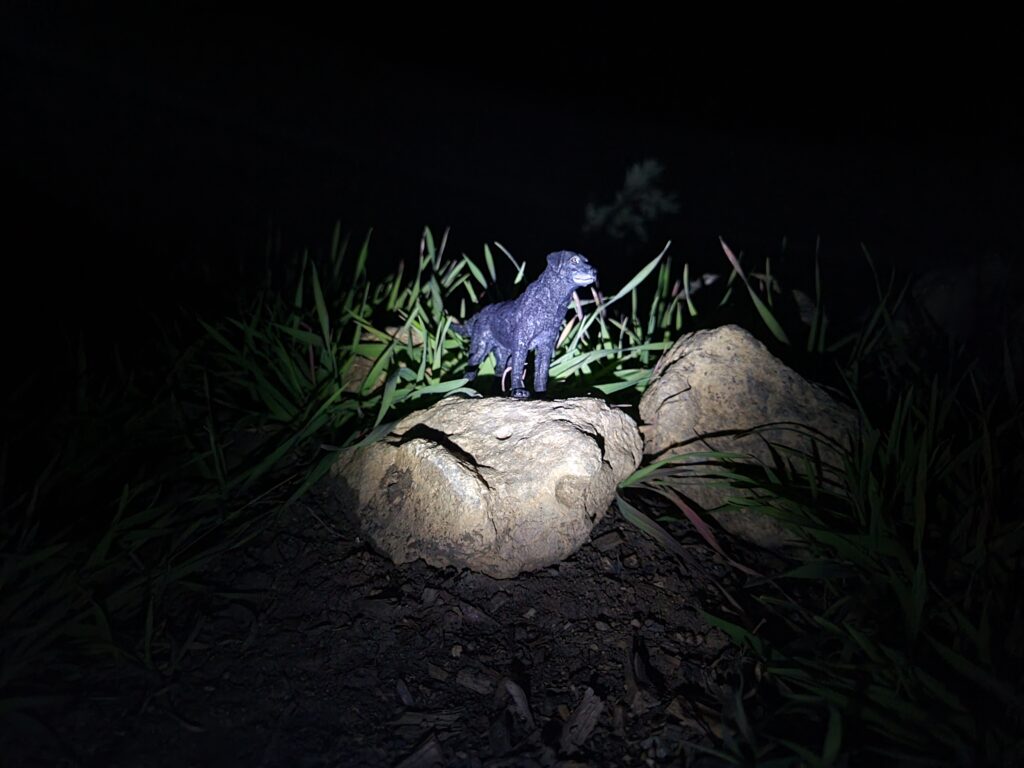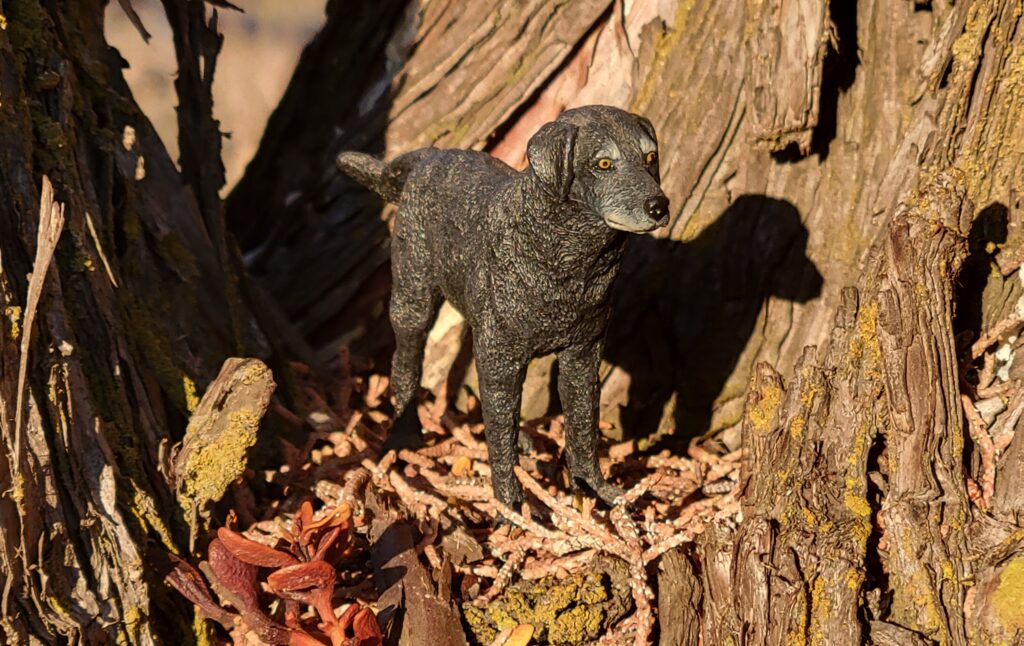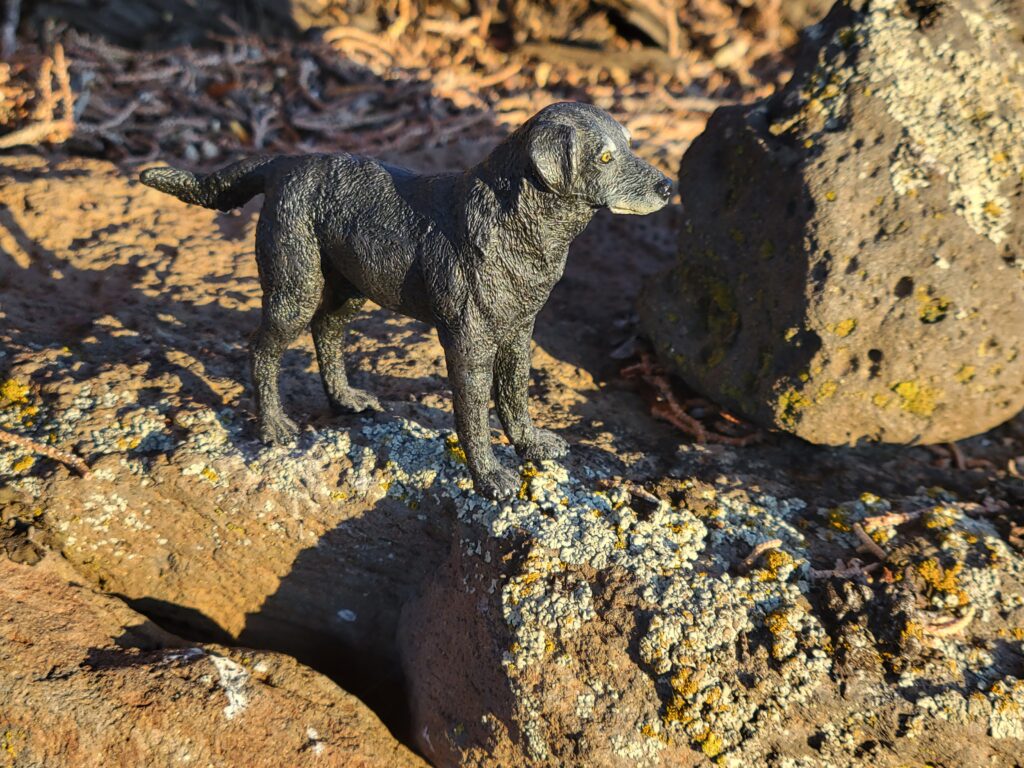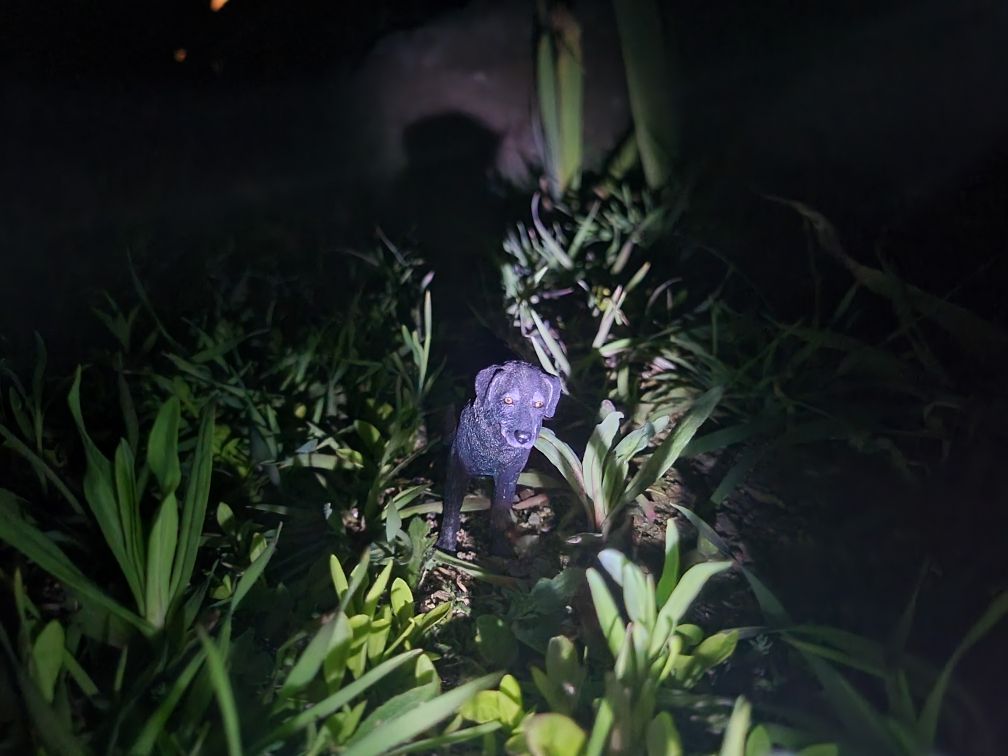
Welcome to the spooky season series of articles! I hope you have had a nice time so far and will enjoy my contributions. My selection for my first article is the Papo “Cassis Lapdog” #54013. This model was released back in 2012 and retired in 2019. It appears to resemble a grizzled older animal with a dark coat washed with a lighter graying and special attention was given to graying brows and around the mouth of the animal. But you can still see a clever glint in the model’s brown eyes. Perhaps this is no ordinary dog…

There is a common English myth that has haunted the nightmares of countless people for some hundreds of years. It goes by the name of the Black Shuck, Old Shuck, Old Schock, or simply Shuck; a paranormal black dog that is said to appear under suspicious circumstances in the eastern portions of the United Kingdom (namely East Anglia). The word “shuck” itself is derived from the old English “scucca” which roughly translates to “devil” or “fiend”, or from the root work “skuh” which is “to terrify”. This mythical creature possesses a duality; sometimes described as a malevolent presence and other times described as perfectly companiable. Physical descriptions vary but are often along the lines of a large, darkly colored animal with a shaggy, unkempt coat. In some stories they are known for violent attacks on man with a savagery only known for wild animals. In others, they are merely keepers of the dead or guides for the lost souls still wandering the landscape of the living. In either case, the myth has gained some popularity. Since its origins in Eastern Britain, sightings have been recorded all across Europe and still are reported today. The earliest documented case comes from the Peterborough Chronicle around 1127 of black hounds attending to dark riders on ghostly horses; the most famous account is from Suffolk in the churches of Bungay and Blythburgh where a black dog was told to have dramatically run through the church, killing a man and boy, and causing lightning to strike the north doors (the scorch marks of which can be seen to this day) before mysteriously vanishing. Some stories recount the beast as simply being a vengeful ghost of a departed animal haunting an area due to some tragic accident to either it or its master. Others claim that its purpose is to shepherd lost souls of the departed into the afterlife. More still, although rare in comparison, claim the hounds are part of a spectral hunt; accompanying dark clad riders, on shadowy horses, with countless black hounds surging around the hunting party’s feet and slathering for any unfortunate passersby. Regardless, these spectral dogs have been used in all sorts of modern media and culture but perhaps the most notable example would be the use of the myth in Sir Arthur Conan Doyle’s Sherlock tale of the Hound of the Baskervilles.

There may be explanations for these stories; the zoonotic disease of rabies is understood to be the culprit behind countless medieval tales and all kinds of mythology around the globe. There could be explanations in the form of phenomenon in the human psyche such as widespread hysteria when faced with unexplainable unknowns or dark circumstances. Regardless, this has proven to be a mythology that has persevered into modern times and reports are still made today.

Moving on to the figure itself, it is rather plain and unassuming in overall appearance. The title of the figure, Cassis Lapdog, has confused collectors for some time, but the estimation is that it roughly translates to “[a] mixed breed of dog”. From my knowledge I would say this is an obvious Labrador cross, as it presents the thick otter-like tail, strong feet, wedge shape head, and thick looking coat of this breed. As for the other portion of the cross, I suppose it will remain a mystery as there are no telling characteristics; perhaps a shepherd or sighthound with its long nose. The figure itself is standing squarely with its head looking forward. The only real movement captured is in the tail; half raised and slightly swung to the right side. The ears are seemingly half pricked but still relaxed, the eyes are keen, and the mouth closed. For me, someone with a history and experience with domestic dogs, this seems to be a sweet old boy of mixed lineage. His body language would indicate interest in something, but a lethargy to investigate it. While it may have appeared as simplistic and too unremarkable for some (perhaps this is what led to its retirement after 7 years), that is actually what draws me to it. Models of mixed breeds have been attempted by others before but this one remains my favorite overall. It has that mixture of traits that present it as nearly real looking, with its clever expression while still being tame in appearance. Whether you read into his auburn eyes something of malevolence or something of a guiding shepherd, I find it to be a rather attractive model representing a less than attractive concept for many. I would recommend this model to anyone with a dog fancy; after all, it may turn out to be something supernaturally special. I hope you all have a Happy Halloween!

Disclaimer: links to Ebay and Amazon on the AnimalToyBlog are affiliate links, so we make a small commission if you use them. Thanks for supporting us!




I actually watched Hound of the Baskervilles this past Friday. The 1959 version. I like this dog figure, it has a familiar quality about it, I feel like I’ve known this dog.
I like this figure; it has a lot of character! I doubt I’ll get it, since I am more strict with dog breeds, but I do like it.
And the historical context you provide is great, perfect for this month’s theme 🙂